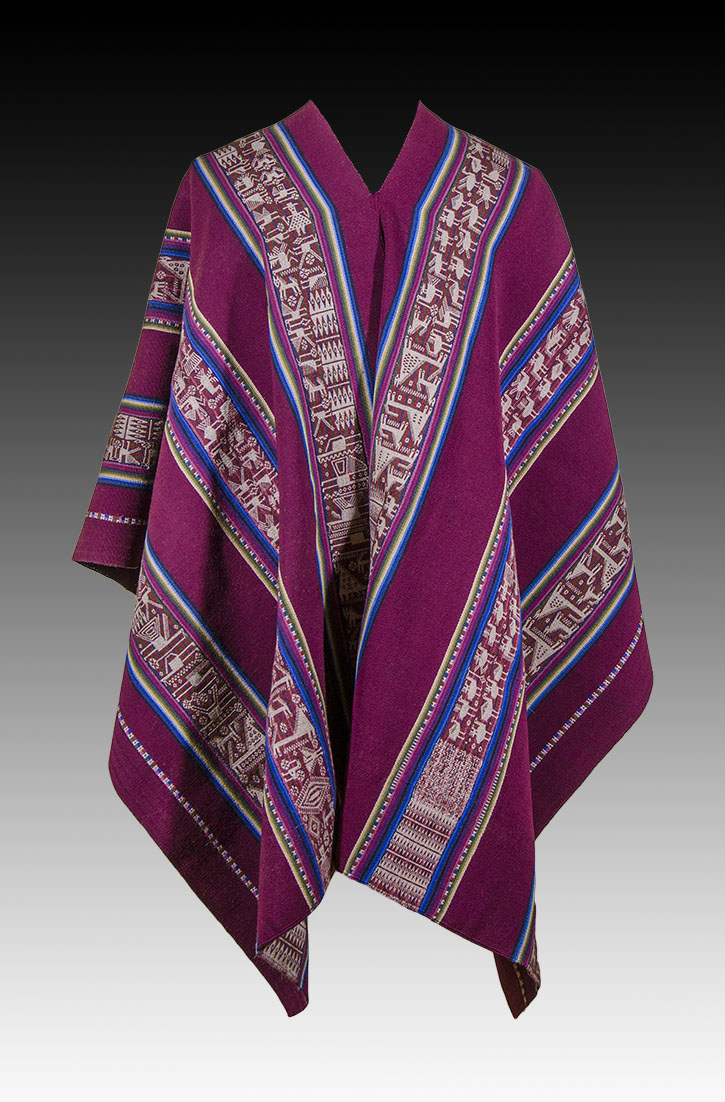BACK TO TOP
TEXTILES
Ceremonial poncho. Charazani. Bolivia. Mid 20th century.
Notable piece belonging to the Kaalaya ethnic group, a partiality of the Quechua culture, settled in Charazani, north of Lake Titicaca. The ornamental designs and the excellence of the technique of its weavers give these ponchos a true “mark of origin” that identifies them. The fiber used comes from high mountain alpacas, hand-spun spun and dyed with natural colorants, in this case with cochineal kernel to obtain the carmine from their fields. Measures. Length 170 cm. Width: 130 cm.
It has been woven according to the ancestral technique, on a horizontal stake loom, formed in two panels, at four edges, with six rows of complementary tubular warp (a technique similar to that used in pampas girdles) that enclose zoomorphic figures of great diversity and hooks. characteristic serials. The artisan's mastery is evidenced in the coexistence of two completely different "drawings", a kind of "double row", in various sectors of the same street. In this particular garment, the weaver chose not to apply fringes to show the delicacy of the fabric obtained and, especially, the edge loque (observed only in high-quality fabrics) obtained by alternating warping of rows of wools twisted in Z, with others twisted in S. This lloque grants, according to shamanic rites, divine protection to its owner.
Its conservation is due to the fact that it was part of a bridal trousseau, woven by the bride or someone from her family, and was used only in festive or religious ceremonies.
Bibliography:
Teresa Gisbert, Silvia Arze and Marta Cajías: Textiles in the Bolivian Andes. La Paz, Ed. Bolivian Photo Agency / Quipus Cultural Foundation, 2003, p. 212.
Are you interested in selling some works?
Send us an email briefly indicating
which works you intend to put on sale, and we will respond. click here
Subscribe to our newsletter to be updated.
Check our Newsletters